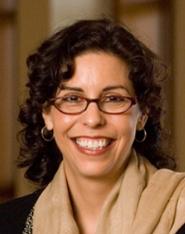
“Race is not a thing that we have or we are, but rather race is an action that we do. It is a system of processes that all of us are involved in on a daily basis,” explained Professor Paula Moya of Stanford University on Nov. 10. Moya’s Eight Conversations About Race lecture was sponsored by the Days-Massolo Center and the Diversity & Social Justice Project. It was aimed at explaining common conversations about race and how these conversations are understood or misunderstood between people of different races or ethnicities.
“We need to think about race and ethnicity in new ways,” said Moya, adding that the media help form our preconceptions about race and ethnicity. She stressed three goals: change the conversations, bring the science and scholarship of race and ethnicity developed over the last 40 years into conversations, and emphasize that individuals are not separate from their social systems. With careful examination of each of these conversations, Moya hopes that the status quo concerning race and ethnicity can be reversed.
Moya’s first conversation was, “We’re beyond race,” or “There’s just one race – the human race.” She cited statistics of college enrollment by race from 1972-2003. In the 1970s, the percentage of black and Latino students enrolled in college was nearly the same as white students. However, over time the disparity widened, with blacks and Latinos attending college at a much lower rate. Moya said this was because in the 1970s, programs provided more opportunities for minorities to go to college, and when the federal government focused less on this issue, the gap grew wider. As she explained, it’s important to consider race in relation to social issues.
The second conversation, “Racial diversity is killing us,” concerned immigration. Moya argued that many Americans only focus on the negative aspects of immigration, that immigrants steal jobs and encroach on communities. However, she noted several positive effects. “States with a large influx of immigrants produce more, hire more, and pay better wages,” she said. Immigrants also stimulate investment and promote labor specialization.
Another misconception about race and ethnicity is the idea of “identity politics.” In other words, people obtain certain benefits because of their background or ethnicity. Moya maintained that this kind of statement aims to shut down the dialogue and destroy any authenticity race and ethnicity have on the conversation. It reduces race and ethnicity to objects or categories for “political correctness.”
“Race is in our DNA,” is often used to highlight differences between groups of people. People use this in conversation as a way to justify actions toward certain groups. Moya explained that this type of thinking is dangerous; the concept of race as biological negatively affects behavior toward people one perceives to be of a different race. Instead, races can be more aptly be coined as biogeographical ancestry groups. These are groups of people that share a common background, culture, and geographical region.
Moya played a humorous jingle to introduce her next conversation, “Everyone’s a little bit racist.” This statement comes from frustration and resentment at “trying to dissect a multicultural country without ‘offending’ anyone,” she said. “We are all a little ethnocentric,” Moya explained, “but we should recognize our own racial bias at the beginning of the conversation, not the end.”
The next conversation Moya noted was “It’s a black thing – you wouldn’t understand.” She said that statements like these kill conversations between persons of different ethnicities. Race and ethnicity are some of the biggest factors in shaping individual experience, but when discussing them, it’s important to not minimize topics by assuming that others will not understand.
Moya also presented two positive conversations. The first was “I’m _____________ and I’m proud.” Pride in one’s ethnicity is common among racial minorities. The problem is when it’s taken to an extreme, where one views their race or ethnicity as superior to others.
Another positive conversation was, “Variety is the spice of life.” Diversity broadens interests and understanding. Differences between people aren’t always just “superficial or fun,” as Moya stated. By handling diversity in a serious, frank manner, understanding race and ethnicity becomes much clearer. This conversation doesn’t take note of power within society or stereotypes. But it can raise awareness of cultural as well as societal issues.
Moya concluded that by thinking of race differently, we can change the conversations we have about race and ethnicity from the start. Then we can look beyond stereotypes and focus on understanding different ethnic backgrounds.
